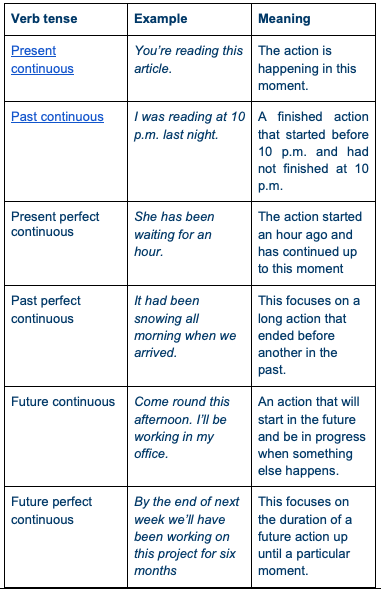What is the present participle used for?
As an English student, you’re probably familiar with the names of some verb tenses, such as the present continuous or the past simple. Have you also heard people talk about the present participle and not been sure what they meant? If so, you’ve come to the right place!
Read on to find out what the present participle is and when to use it.
What is the Present Participle?
The present participle, also known as the gerund, is one of the forms of every English verb. To create it, we use the base form of the verb and add -ing. For example,
Eat – Eating
Sleep – Sleeping
Wait – Waiting
Eating, sleeping and waiting are all present participles.
Spelling rules
With verbs that end in -e, we remove the -e and add -ing. For example,
Drive – driving
With most short one-syllable verbs, like stop, put, sit, we double the final consonant. For example,
Stopping, putting, sitting.
When do we use the Present Participle?
The present participle is used in the following situations:
- to make continuous tenses
- as an adjective
- after certain verbs
- to describe a past action
Let’s look at each of these uses in more detail.
Continuous tenses
We use continuous tenses to describe ongoing actions. That can mean in the present, in the past, and in the future. For example:

Here are some more examples:
What are you doing? – I’m finishing this report.
Zoe was cooking when we arrived.
How long have you been working here?
They’d been trying to repair the computer for ages when finally they found the problem.
You’ll be lying in the sun this time next week.
Next week they’ll have been building these offices for two years.
-Ing Adjectives
Many English verbs can become adjectives by using the present participle. For example,
Interesting (from the verb ‘to interest’)
Tiring (from the verb ‘to tire’)
Boring (from the verb ‘to bore’)
Amazing (from the verb ‘to amaze’)
We can use these adjectives to describe nouns, which could be people, things or situations. For example,
You must see this film. It’s really interesting.
What an amazing view. It’s beautiful!
I had a boring weekend. I didn’t do anything.
Her job is very tiring. She has to stay on her feet all day.
The Present Participle after ‘Go’
We use the present participle after some verbs of movement, most commonly ‘to go’. For example,
To go skiing
To go jogging
To go sailing
To go swimming
To go climbing
The Present Participle after certain verbs
We also use the present participle after the sense verbs (See,
Look, Hear, Sound, Feel, Taste, Watch, Smell etc)
For example,
We saw the police catching a criminal.
They heard someone calling for help.
I watched the band marching past.
Describing two actions at the same time
The present participle can also be used when two things happened at the same time. This use of the present participle is quite formal and generally only found in written English. For example,
Walking down the street she met her old friend.
Arriving late she realized she’d missed the meeting.
Driving to work he listened to the radio.
Now you’ve got a better idea of what the present participle is and when it’s used, try to practice it as often as possible.
Question words are words we put at the start of a question to ask for particular information. Want to know more? Read on here!
The second conditional is used to express the consequence of a situation in the present or future. Read on to find out more.